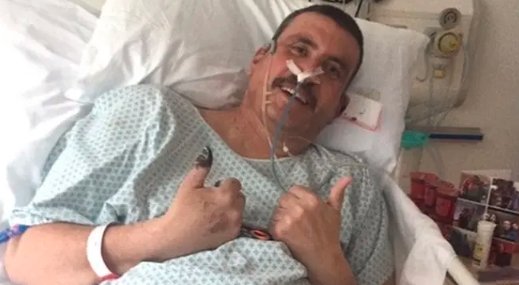Jane Gibson, a fit Scottish rheumatologist and avid paddler, faced a life-threatening health crisis during a sunny kayaking outing with her husband on Scotland’s north coast in 2020. What started as a relaxing adventure amid easing Covid rules turned into a battle against broken heart syndrome, now known as Takotsubo cardiomyopathy, leading to her airlift to hospital and eventual recovery through a pioneering clinical trial.
The Kayaking Trip Turns Chaotic
The day began with perfect weather as Jane and her husband Gary joined friends for a routine paddle along the scenic north coast. As restrictions from the pandemic lifted, the group savored the calm sea and bright sun, a welcome break after months of caution.
Large waves suddenly hit, flipping Gary’s kayak and scattering the paddlers. Jane, drawing on her experience, quickly beached her boat on nearby rocks and climbed a rugged headland to check on him. Relief washed over her when she spotted Gary safe on the shore after self-rescuing.
This moment of stress, however, sparked an unexpected chain of events. Recent studies highlight how such physical shocks can trigger heart conditions in active individuals, especially women over 50. Jane’s story echoes rising reports of stress-related heart issues post-pandemic, where outdoor activities sometimes mask underlying vulnerabilities.

Sudden Onset of Alarming Symptoms
Right after spotting Gary, Jane felt a sharp pain grip the back of her neck and tighten her jaw. She dropped to her knees, overwhelmed by the intensity, though no chest pain followed. The episode faded after minutes, but as she paddled back, breathlessness forced her to stop after just three strokes.
Struggling to carry her kayak uphill, Jane lay down and checked her pulse, finding it alarmingly low at 35 beats per minute. Panic set in as she told Gary she suspected a heart attack. Her quick thinking led to an immediate call for help, and a rescue helicopter soon airlifted her to Raigmore Hospital in Inverness for urgent tests.
This rapid symptom progression mirrors common patterns in Takotsubo cases, where adrenaline surges from stress weaken the heart muscle temporarily. Experts note that such episodes often mimic heart attacks, leading to confusion even among medical professionals like Jane.
Diagnosis Reveals Broken Heart Syndrome
At the hospital, scans ruled out a traditional heart attack, instead identifying Takotsubo cardiomyopathy, a condition that causes the heart’s left ventricle to balloon and weaken suddenly. Despite her background in rheumatology, Jane had only vaguely heard of it and turned to research for details.
The diagnosis brought mixed emotions: relief over no blocked arteries, but concern as she learned it carries risks similar to heart disease, with mortality rates around 6.5 percent in recent U.S. data from 2025. Takotsubo disproportionately strikes women, accounting for up to 3 percent of suspected heart attacks, often triggered by emotional or physical stress like Jane’s wave incident.
To help readers spot the differences, here’s a comparison of key symptoms:
| Symptom | Broken Heart Syndrome (Takotsubo) | Traditional Heart Attack |
|---|---|---|
| Chest Pain | Possible, but often absent or mild | Severe and central |
| Shortness of Breath | Common, sudden onset | Common, with pain |
| Trigger | Stressful event (physical/emotional) | Blocked artery |
| ECG Changes | Abnormal, but reversible | Abnormal, persistent |
| Recovery Time | Days to weeks, full in most cases | Months, with potential damage |
| Prevalence in Women | Over 90 percent of cases | Varies, but rising |
This table underscores why quick diagnosis matters, as treatments differ significantly.
Entering a World-First Clinical Trial
While recovering, Jane learned of a groundbreaking trial at the University of Aberdeen led by Dr. David Gamble. The BREAKOUT study, launched in 2022, was the first randomized trial worldwide examining recovery strategies for Takotsubo patients. It tested standard care against cognitive behavioral therapy (CBT) and intensive exercise programs.
Jane joined the exercise group, pushing her limits despite her fitness level. The trial, involving 76 patients mostly women averaging 66 years old, revealed that traditional heart medications often fall short for this syndrome. Instead, CBT and exercise improved heart energy production significantly, reducing long-term risks like heart failure.
Recent 2025 publications from the trial emphasize its impact, showing statistically significant gains in heart function. Jane’s participation not only aided her but contributed to evidence that could help thousands, as Takotsubo cases have risen with global stress levels.
Path to Recovery and Lasting Lessons
The exercise regimen proved grueling, yet empowering for Jane, confirming that staying active post-diagnosis beats sedentary worry. She returned to paddling and her consultant role, armed with knowledge that full recovery is possible, though follow-ups are key to monitor for the 5 percent recurrence rate.
Broader research in 2025 highlights ongoing challenges, with U.S. hospitals reporting higher complications and rehospitalization rates of 743 per 1,000 person-years. Yet, positive outcomes like Jane’s offer hope. Key benefits from the trial include:
- Enhanced heart muscle energy, aiding pump efficiency.
- Reduced anxiety through structured CBT sessions.
- Lower risk of future episodes with consistent physical training.
- Improved quality of life, with participants reporting better daily function.
Jane’s experience ties into a surge in awareness, linking Takotsubo to events like natural disasters or personal losses. Logical steps for prevention involve stress management techniques, such as mindfulness, which recent studies show can buffer against triggers.
Implications for Heart Health Awareness
As cases climb, especially among active women, stories like Jane’s spotlight the need for better recognition. The 2025 InterTAK registry data from over 3,957 patients confirms evolving insights, with microvascular issues playing a bigger role than once thought. This aligns with post-2020 trends, where pandemic-related stress amplified such conditions.
Experts urge routine check-ups for those with high-stress lifestyles, emphasizing that early intervention via trials like BREAKOUT can transform outcomes. Jane’s journey from kayak peril to advocacy role inspires, proving resilience in the face of unseen heart threats.
Share your thoughts on surviving health scares in the comments below, and spread this story to raise awareness about broken heart syndrome.


















